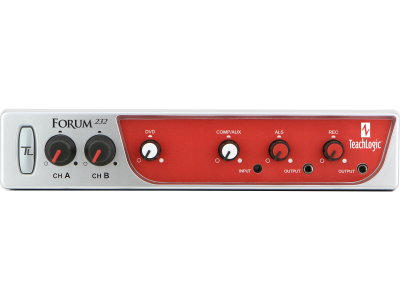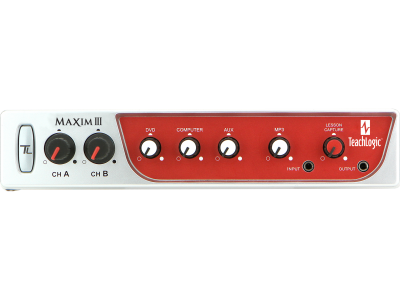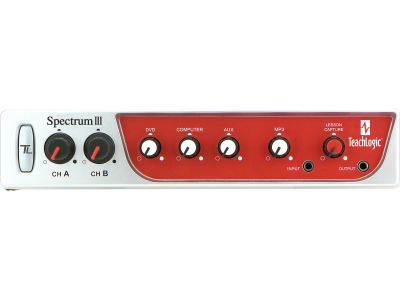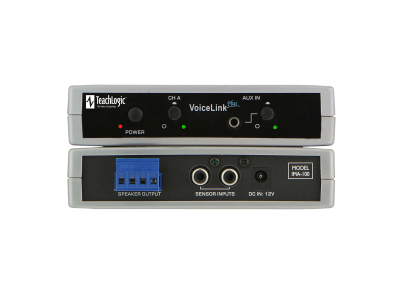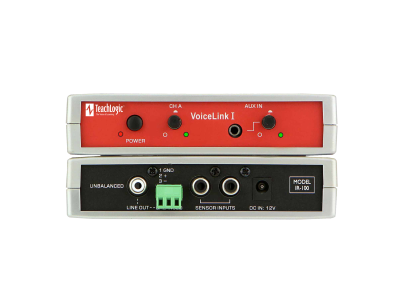A classroom Sound Field System is essentially a small public address (PA) sound system, designed for the confines of a typical classroom–approximately 1000 sq ft. These systems are engineered to maximize intelligibility of the educator’s voice as well as all audio sources connected through it such as TVs, touch boards, projectors, and computers.
Sound Field vs. Sound Amplification/Reinforcement:
From a hardware standpoint, these systems are similar and therefore often confused as being equal. Both require an amplifier, receiver (for audio inputs), and overhead speakers (ceiling or wall mount). However, classroom Sound Field systems are different in two important ways:
- They use multiple overhead speakers (ideally 4 in-ceiling speakers for up to 1600 sq ft) to evenly distribute the sound throughout the entire listening area. One speaker is like having one light in the classroom. It’s bright at the source, but not enough the fill the room. Just like it would be hard for all students to see equally well with one light, it’s hard for them to hear equally well with one speaker source.
- Because a Sound Field system distributes all audio, a microphone for teachers is crucial. The teacher’s voice is also one source. It’s not that their voice isn’t loud enough. It simply falls victim to classroom noise (HVAC, outside activity, clicking. coughing, etc), reverberation, and direction, i.e. when the teacher turns away from any student. A microphone enables a teacher to use their natural voice without the need to project and they can move anywhere in the classroom and the students hear the same.
How loud does audio need to be?
More than 50 studies have been conducted on classroom sound to establish that at least 65 decibels are needed for a student to hear well. This is because the normal noise level in a classroom is about 50 dB and the studies concluded that a signal-to-noise ratio of 15 dB is needed. Translation: the teacher’s voice and all audio sources need to be 15 dB louder than other environmental sounds in the classroom: 50 + 15 = 65 dB. It’s important to note that the 65 dB level is at the students ears, not from the source, e.g. the teacher’s mouth.
So why a microphone for teachers?
Normal speech is 50-60 dB. Loud speech (using your teacher’s voice”) is about 65 dB. Good right? Wrong. Due to basic physics, after about 12 ft this has decreased to 53 dB. The average air conditioner runs at 50 dB, which means even if the teacher’s voice is 53 dB at 12 ft, it’s only 3 dB higher, not the 15 dB the studies have shown are needed. And any student sitting beyond 12 ft is struggling to comprehend what’s being said.
It’s not just about volume. It is about the consonants.
Often teachers will try to compensate throughout the day by projecting. The main job of a Sound Field system is to evenly distribute high frequency (soft consonant) sounds throughout the room. However, speaking lower pushes the vowel sounds up. Students may hear more, but understand less. The microphone is simply sending the teacher’s voice through the Sound Field system so that it is reproduced for every student as if the teacher is just a couple feet away. It also maintains the crucial soft consonant sounds required for student comprehension.


